
When asked to write about my career in geophysics, I was initially perplexed. Although I have worked closely with geophysical data for over twenty-five years, my formal training was in “classical” geology. I have morphed from “hard rock” to “soft rock” geology and from geologist to exploration geoscientist. Some of my fellow “geoscientists” consider me a geologist, others as an interpretive geophysicist. To all I hope that I am an “explorationist”.
I was born and raised in small towns located in southwestern Ontario, Canada. My first encounter with geoscience was through a summer job with Noranda Exploration in 1964, after my first year at the University of Western Ontario (UWO). My experiences with Noranda included running EM and SP surveys in northern Ontario between Timmons and Kirkland Lake. This experience helped me get jobs in the mining industry every summer which financed my education until my graduation in 1968.
I was accepted into the graduate program at McMaster University in Hamilton and started the fall of 1968. It was there that I met my wife Janis and we were married two years later in 1970. After I submitted the first draft of my doctoral thesis, I was given permission to take a lecturer position at the University of Waterloo while finalizing my thesis: “Coronite Amphibolites from the Whitestone Lake Anorthosite” in the Grenville Province near Parry Sound Ontario. My teaching assignments were 4th year Precambrian geology and 3rd year Metamorphic Petrology.
How did I ever get into the oil business? I was planning a trip to Halifax to meet the Dean of Science from ANU in Canberra Australia. I was on a short list for a teaching position at ANU when I received an offer of fulltime employment by a phone call from the Chief Geologist (Dr. Bill Ayrton) at Amoco Canada Petroleum Company in Calgary. This call came “out of the blue” to me while in Waterloo. I had been interviewed the prior year while still at McMaster but Amoco did not conclude any offers that year. The call to me was a follow-up for the current hiring year. It was a bit of a dilemma, as Amoco wanted a response within a week and before my planned interview for the teaching position at ANU. After recalling that many of my colleagues had ended up in the petroleum industry, my wife and I decided to stay in Canada and move to Calgary in May 1973. In fact, we were driving to Calgary when my convocation took place at McMaster.
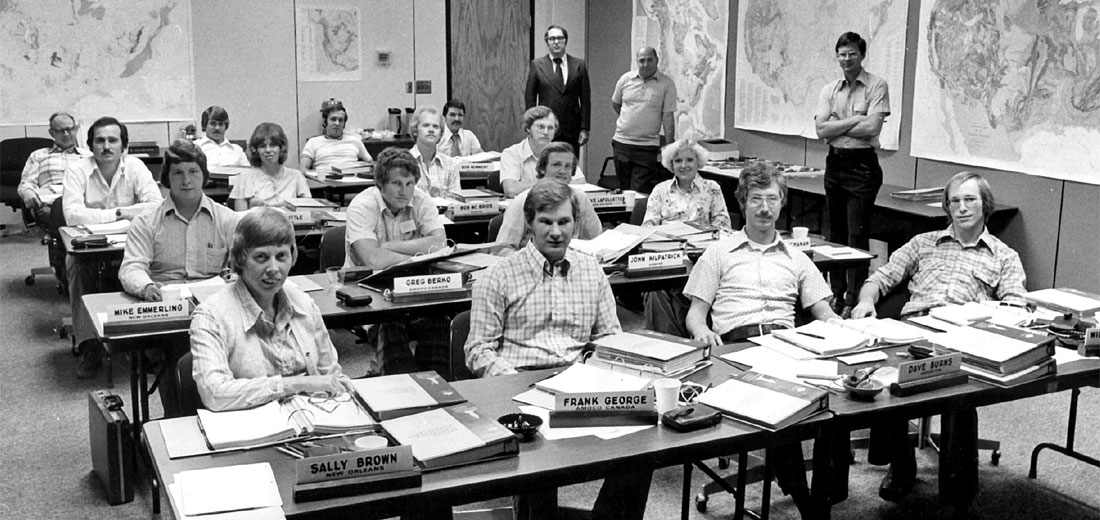
My first assignment at Amoco was to participate in a field party evaluating the petroleum potential of the Proterozoic Shaler group outcropping on Victoria Island in the Canadian Arctic. This was a very interesting assignment and the first and only time for me to visit the Arctic. We were using the Irkutz amphitheatre area of northern Siberia as our producing analogue. Experiencing the “midnight” sun, seeing Muskox, seeing summer pack-ice, swimming in small ponds and commuting to work by helicopter or bush plane were just a few of the highlights of that assignment. Returning to Calgary I joined the McKenzie Valley-Beaufort Sea exploration group at Amoco. I recall that there was a prediction that oil might get to US$100 by the end of the century. Well, it did reach those levels and more in 2008.
My introduction to geophysics included Peter Vail’s publication on the use of seismic character patterns to predict depositional environments. As a regional geologist I was intrigued by this method of using a type of “remote sensing” to interpret geological processes when there was little or no well data for control. During the first of many “industry slowdowns”, Amoco sent my wife and I to their New Orleans office on a three-month work assignment in the fall of 1974. There I had a chance to work several “blocks” in offshore Louisiana. Upon my return to Calgary, I was assigned to my first international project when I worked with geophysicists interpreting seismic data in the Natuna Sea area of offshore Indonesia. As the Canadian industry recovered, I began to work on projects in the Western Canada Sedimentary Basin (WCSB).
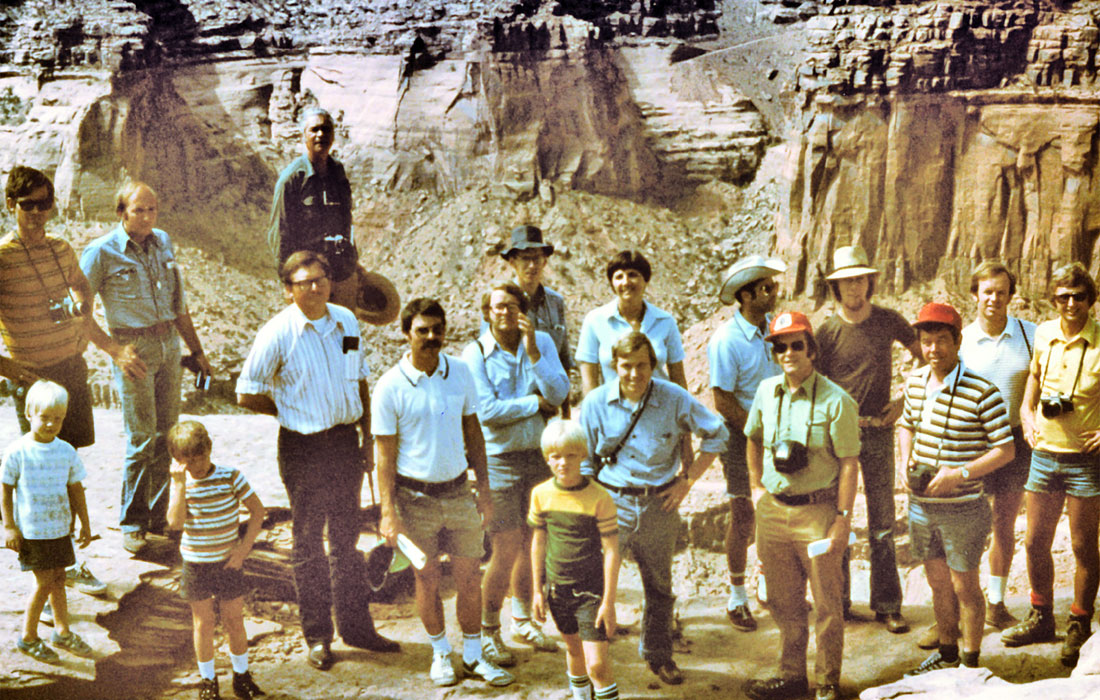
My next encounter with geophysics was as a team member exploring for Colony sand channels at the top of the Mannville Formation in the Eastern Alberta Plains region. I believe that Amoco Canada was one of the first companies to experiment with multi-discipline teams, where team members knew about other disciplines and the teams were able to make decisions on casing or abandoning wells without management approval. I joined Home Oil Company in 1977 and worked with a geophysicist in the Peace River Arch area. We worked very close and used to joke about who should present the geology and who the geophysics in our presentations to management. After Home Oil, I joined Canadian Hunter Exploration to work with a close friend and colleague to establish the American Hunter operations in the USA. Areas studied included the Rocky Mountain basins and mid continent regions.
My transition to become an interpretive geophysicist began when I joined Teknica Resource Development in 1982. Roy Lindseth, Teknica’s founder, was passionate about interpreting geology from seismic. He taught me the principles of inversion and I was soon caught up in his enthusiasm. I had only been with Teknica about a month before I was sent to Indonesia to interpret a “Seislog” project in the Jambi basin of South Sumatra. Over the years at Teknica, I learned the lesson that “anything” could be interpreted even “garbage”. Thus began my close relationship with the data processors to better understand how important it was to understand limits of resolution (related to frequency content) and the importance of noise reduction.
While at Teknica I had the opportunity to work in many basins in many countries. Over the years I have been exposed to the geology and petroleum potential of over 50 basins located in over 35 countries. Roy encouraged his staff to engage in active involvement with technical societies. During that period I became a member of the CSEG, SEG, EAEG, and AAPG. I gave talks on the application of inversion methods (Seislog) at AAPG, SEG, CSEG and CSPG conventions.
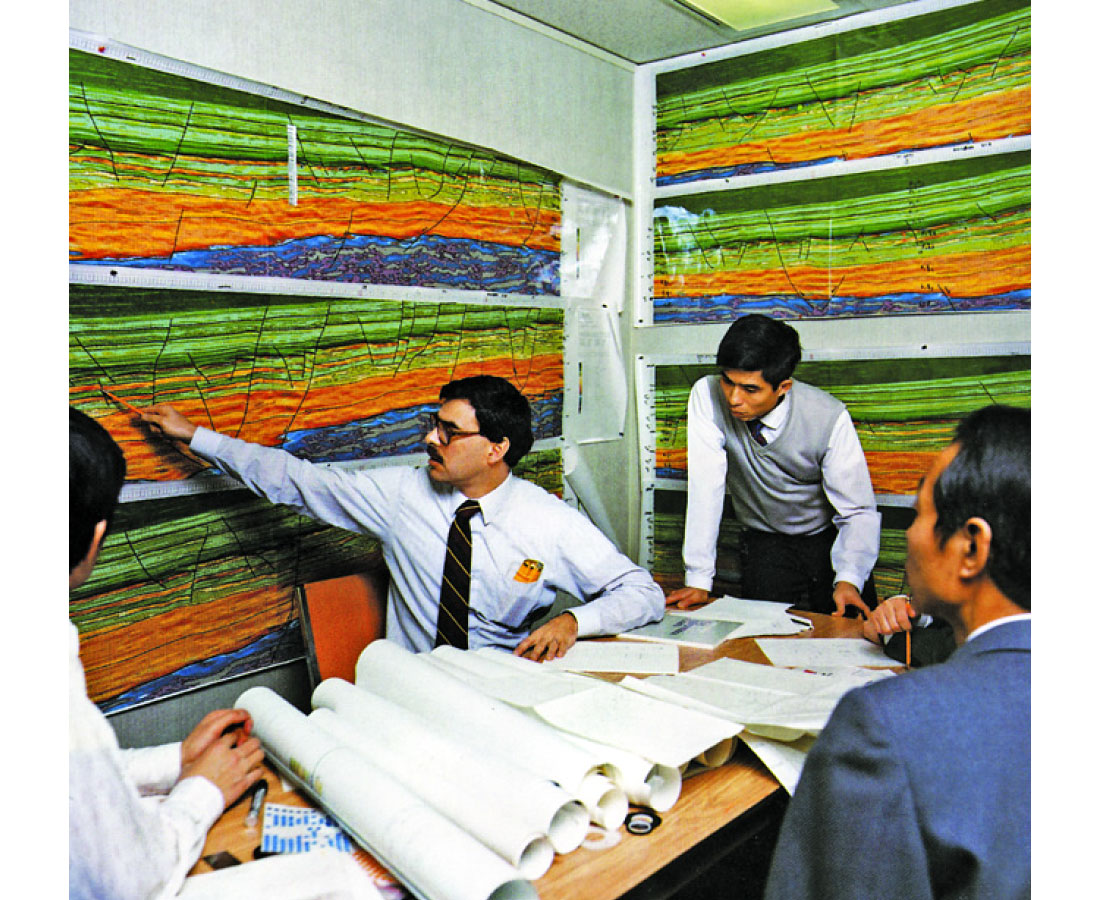
During the 1980s, business in Western Canada was slow, but the international scene remained active. I was fortunate to be a member of an SEG team that presented papers in Daqing China. I remember my first banquet experience in China. I was seated next to a geophysicist who only spoke Russian, Chinese and French. By the time to meal was finished I had a splitting headache from trying to recall phrases from my high-school French classes.
Another thing I learned was to never eat everything on my plate. That was a sign to have it refilled. The Chinese hospitality practice is to feed their guest until they are sated! This was the beginning of a five-year relationship with Chinese oil companies. While at Teknica, I was involved with negotiating and executing several reprocessing, inversion and interpretation contracts with many of the northern Chinese oil fields: including Daqing, Jilin, Liaohe, Shengli and Erdos. I was able to visit all these areas and feel privileged to have seen China while it was opening to western companies.

The Canadian and Alberta government were sending trade missions to China during this period and I was a participant in many. Our contracts included technology transfer and training. Over the years, Teknica had several groups from China visit Calgary for training. My wife and I often hosted these groups in our home for dinner as a break from the many “official banquets”.
Over the years visiting China, I recall many great memories. Some were on the 24-hour express train from Beijing to Daqing (with only two stops on the way). One time I met a Chinese millionaire who sold lumber to the Russians. He had a James Bond briefcase filled with expensive liquor and a carton of Kent cigarettes. He liked to flash his money around and offered to buy everyone’s meals in the dining car. His only complaint was that the Ruble was not as good as being paid in US dollars.
My last trip on that train was in 1989 when my wife accompanied me as part of an SEG Delegation. Some of the group had decided to change our return arrangements to Beijing. Not a good idea! I was not able to get a “soft seat” sleeper ticket for myself (I did get one for my wife). I started off in the “hard seat” car but then wandered up to join my wife and some others in the “sleeper” car. I decided to stay there and ended up “hiding” from the conductor and sneaking out of the Beijing station with the baggage.

During this visit to China, I was also heading a delegation to negotiate a CIDA contract in the Erdos area north of Xian. We were scheduled to fly to Xian but when we arrived at the airport we were informed that our flight had been cancelled. I was in a panic, arrangements for accommodation and transportation had been made in Xian to take us to the oilfield (6 hours north of Xian by road) and I was uncertain as to how we could rearrange travel. It was almost impossible in China in the late 1980s to change reservations. Looking out the airport windows, I could see a plane at our designated gate. I asked, “what plane was that?” They told me it was yesterday’s plane. I then asked if we could have tickets for yesterday’s flight. They said: no problem and off we went.
I have many great memories of my visits to China in the 1980s. While at Teknica we had similar consulting contracts (reprocessing, interpretation and technology transfer) with several National Oil companies. During those years I established friendships with geophysicists and geologists from TPAO (in Ankara Turkey), OGDC (Islamabad Pakistan), Petronas (KL, Malaysia), OKGV (Budapest, Hungary) and Ecopetrol (Bogotá, Colombia), to name a few. I left Teknica in 1989 to work with Saskoil, which became Wascana. I was hired to develop international opportunities in China. Unfortunately the Tiananmen Square incident took place at the end of my first week in my new position. That took China off the priority list.
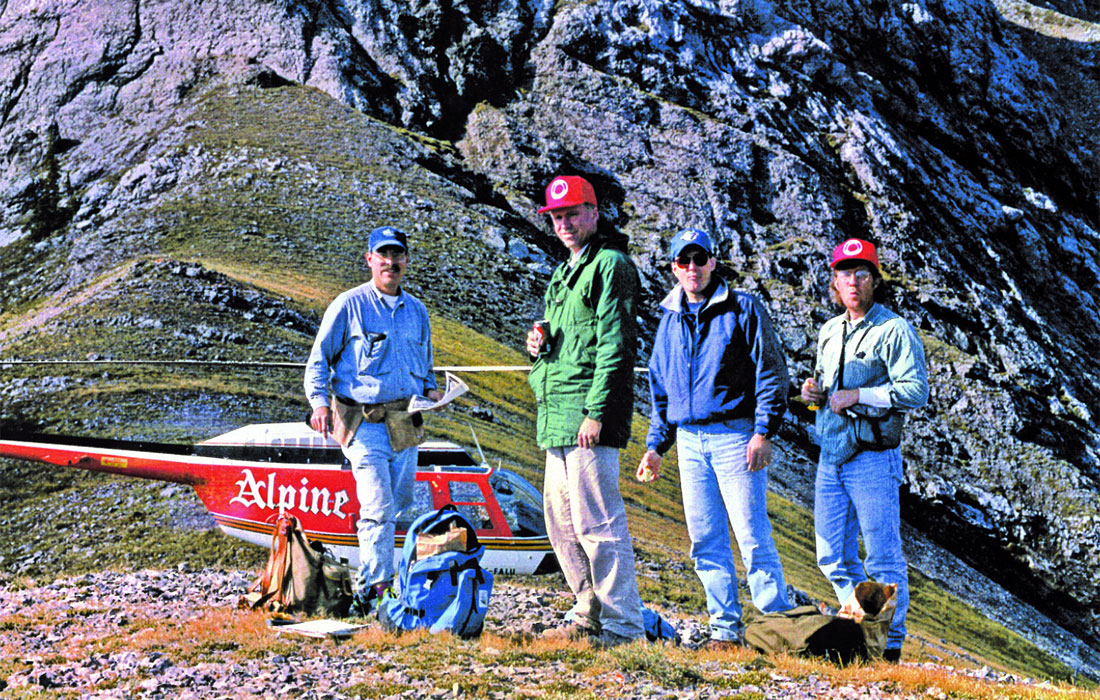
My main role at Wascana was to establish an Asia-Pacific region for the company. This took me to Indonesia, Australia and Pakistan. I was involved with several interesting projects and again made many friends during these years as much of the work was in the form of multi-company project groups. Unfortunately low oil prices in the mid 90s brought this work to an end for Wascana. When the company was taken over by CanOxy, now Nexen, I decided to return to a consulting environment (Teknica) but this time on my own. I set several goals when staring off: mix domestic and international work, learn to use seismic interpretation software and have a minimum of two clients each year. Over the past twelve years, I have worked on projects in Western Canada, Cuba, Ireland, Egypt, Alaska, offshore Labrador, offshore Africa, Kazakhstan and North Korea. I have had twenty-three different clients ranging from large multinationals to small one-man private oil companies. I have learned to interpret seismic data using several software packages and also have become proficient in the use of modeling (single well and 2D) software.
During my initial consulting years, I was fortunate to join a group from the UK (Exploration Geosciences or EG) to interpret about 20,000 km of seismic data and integrate the results with over 20 exploratory wells from the onshore region of the North Slope of Alaska. This project was my first sole venture as an interpretive geophysicist. Another similar sized project with EG involved interpreting seismic and well data from offshore Labrador. As an interpreter, I have learned enough about data processing to call in an “expert” when the seismic data seems noisy or discordant with regional geological trends.
One of my strangest trips was one to Northern Korea in 2002. I was there to evaluate the petroleum potential of an onshore concession in the extreme northeast of the country. This was “coal” country with many operating mines and reports of gas and oil shows during the initial core program to establish the mining areas. My impression of North Korea was that conditions were similar to when China opened to the west during the Nixon years.
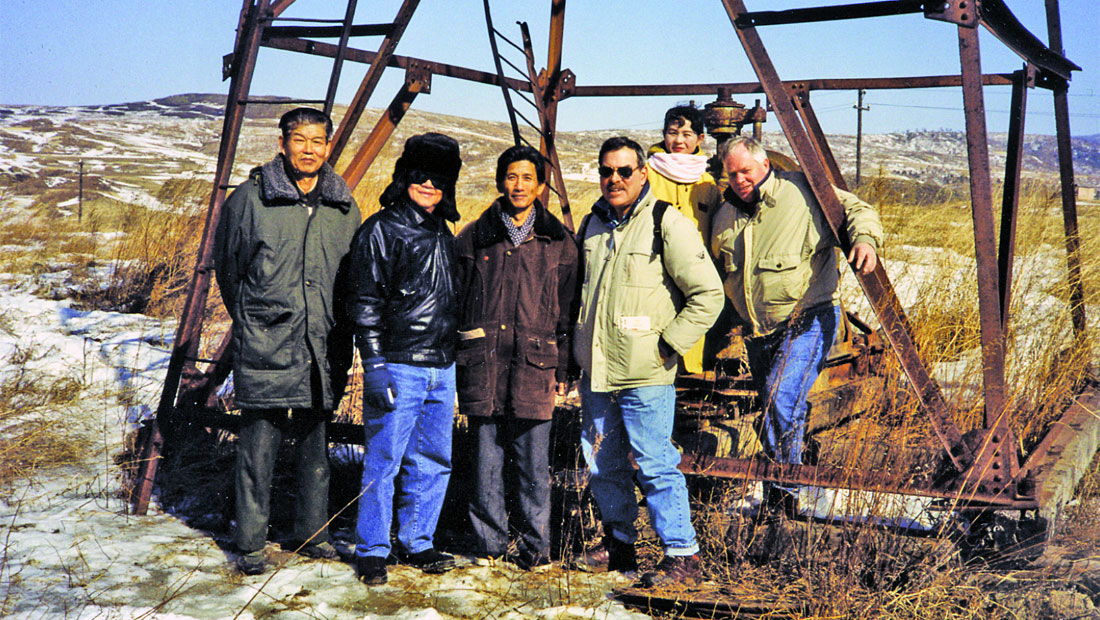
During the past twelve years I also found time to help found a private junior oil and gas company exploring in central Alberta W5 and participate on the board of directors of two publicly traded junior companies exploring in the same areas.
I have always been motivated to “give back” to my profession by volunteering to Technical Societies. For the CSEG, I was Second Vice President (technical) in 1989, represented them on the Canadian Geoscience Council (now CFES) in 2000, have been an active member of the Continuing Education and Outreach Committees and was a mentor for two High School students in 2007. In 2001 I developed and presented a three-day course “Exploration for Carbonate Reservoirs in the WCSB” for the University of Calgary’s Geoscience Professional Development Centre (GPDC). This course was also presented as part of the first two “DoodleTrain” programs.
In addition to my volunteer activities with the CSEG, I have been active with the CSPG on their executive (Treasurer in 1995) and committee work. Much of my volunteer work has been with the AAPG where I served four terms on the House of Delegates, was Chairman of the Calgary Delegates from 1986 to 1988 and was instrumental in recruitment, mentoring and reviving Canadian involvement in the House of Delegates and Canadian representation in AAPG. I served two terms (1989-1992 and 2007-2009) as the Canada Region representative on the Advisory Council and also served on several AAPG Committees including Distinguished Lecture, HoD Honors and Awards, Environmental Geology, International Regions and Ad Hoc Graduated Dues. I have been an AAPG Mentor. This volunteer activity resulted in a Certificate of Merit in 1987 and this year I will receive an AAPG Distinguished Service Award at the annual convention in Denver. Volunteer work has broadened my network. In addition to those in the “oil patch”, I have had the opportunity to meet and make friends with fellow geoscientists in academia, government and other professional fields (groundwater, mining, geotechnical engineering etc.). This has given me a greater appreciation for the impact that geoscience has on our society and the environment.
My activities with the Canadian Geoscience Council (CGC) initially began as CSEG representative then became Finance Director and finally served as Executive Officer for three years. During that period I helped with re-involving the industry (oil & gas and mining) with this organization and its rebirth as the Canadian Federation of Earth Sciences (CFES). For four years, I served as member and Co-chair of the MNABES (Minister’s (NRCAN) National Advisory Board for Earth Science) a Canadian Federal government committee and during the last two years was a member of MACST (Minister’s (NRCAN) Advisory Council for Science & Technology).
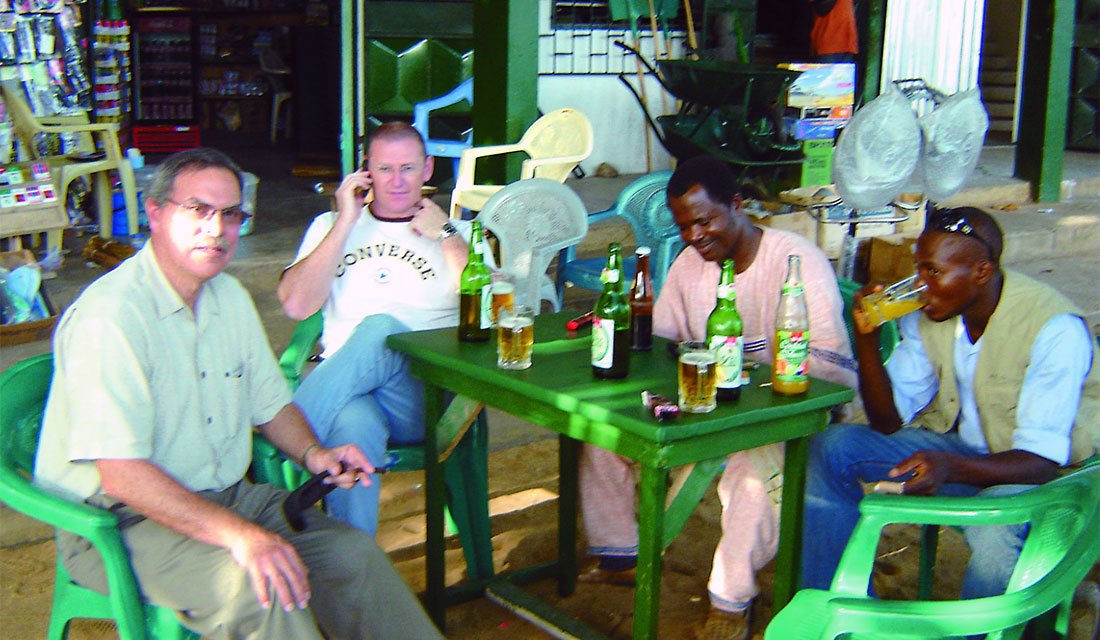
In summary, I have been very fortunate in my career in the petroleum industry to be exposed to such a variety of geological settings. It has given me insights into the many ways oil and gas can be trapped. My love for continuous learning has allowed me to integrate my geological and geophysical expertise. A measure of my success has been that some of my friends consider me a geologist and others a geophysicist. The opportunity to visit many countries and experience a taste of their cultures has broadened my perspective on the world. I continue to enjoy friendship with many I have encountered in my travels around the world. We work in a very tight geoscience network. I am amazed how often I am reconnected with former colleagues through technical society volunteer activities or business relationships. I am currently “semi-retired”, which means that my wife and I can travel more including visits to our granddaughter in Colorado. However while in town I can take advantages of consulting opportunities to help pay the bills.
If asked to advise young geoscientists on career direction, I would recommend that they take seriously any offers by their “boss” to relocate or change job descriptions. When you are starting a career, opportunities to demonstrate your dedication and competence don’t come along very often. You need to take advantage when they arise. Another important perspective is to recognize your strengths – technical expertise, teaching / mentoring or management. When opportunities arise try them all. You will soon know which fit your personality and temperament. I’ve been able to practice all areas during my career and I know where I feel most comfortable and where I can contribute the most. I am very honoured to have been asked to share my geoscience autobiography with the readers of the RECORDER. I hope that it will inspire others in the same way that I was inspired while working with other geoscientists over my 35 year career in the petroleum industry.











Join the Conversation
Interested in starting, or contributing to a conversation about an article or issue of the RECORDER? Join our CSEG LinkedIn Group.
Share This Article